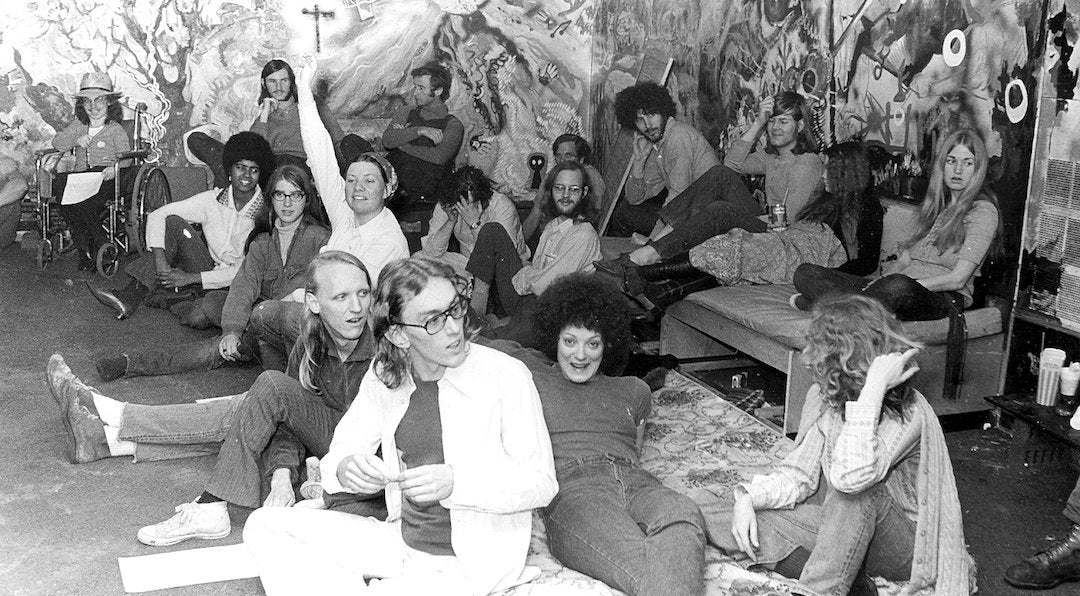
Rochdale Reissued
David Sharpe, author of Rochdale: The Runaway College, originally published in 1987, introduces the phenomena of the college and his longterm interest in it.
Rochdale College gave us one of the largest, brightest, darkest, coolest expressions of the Sixties that North America had ever witnessed. But how did the counterculture inherit and run this eighteen-story highrise in the middle of Toronto? To some, Rochdale was heaven. To others, it was a drug supermarket and fortress. The layers of parody and concealment, the jumble of altered perceptions and conflicting memories defy any easy history.
Rochdale has intrigued me ever since my similar, but limited, free university experience at UBC. I began digging for answers, not suspecting that my project’s lifespan would equal my subject’s — seven years of radical living for Rochdalians and, for me, seven years of research and writing. I worked as a security guard in the Royal Ontario Museum — a superior job for an aspiring writer. In the galleries, stationed beside the suits of armour, I savoured the ample hours to think and plan with energy left over for crafting. Conveniently, just down the street hulked my subject. This was 1980, and senior citizens were moving into the newly white-washed Senator Croll Apartments.

In the Fisher Rare Book Library for hours at a time for weeks at a time, I fingered through the paper trail left by Rochdale. I rode my bike to interviews and piled up notes. My room in a Rosedale basement doled out space for no more than a bed, a bookcase, a guitar, and a desk below a narrow window showing the feet of passersby. What I saved in rent, I spent on a computer with an eight-inch disk drive that closed like a fridge door. By 1982, I was assembling a draft on the nine-inch screen of a “luggable” Kaypro II. Green glowing characters spilled onto a black background and kept coming, but the computer could handle only small files. In the end, the book stitched together seventy-nine sub-docs, coordinated by index cards and keywords.
The magnificent mess of material clung together by theme. Self-government. Drugs. Communities and crafts. But the Rochdale phenomenon needed narrative. I shuffled units into timelines. Having first separated the themes, I could then decipher the chronology. The Rise launched into The Tyger Burning Bright. The five-part story peaked in The Eighteen-Story High, then slid into The Rocking Cradle, and ended with The Fall. A third overhaul added my own commentary, and together it became 1987’s Rochdale: The Runaway College, republished this month.
Fifty years on, let’s talk more about that concrete elephant on Bloor. The Rochdale story and current headlines resonate. Consider, for example, the wall against Mexico. As climate change and overpopulation intersect, a defining crisis for years to come will be mass human movement. Migrants, refugees, asylum-seekers are, profoundly, runaways. Rochdale College faced exactly the same tangled problem. How do you protect your community from perceived invasion? Should Rochdale Security evict and exclude? But Rochdale created its unique world through the opposite — a fiercely tolerant, wide-open front door. If freedom had not sparred with order, licence with law, democracy with fiat, Rochdale College would not have given us this grand, unbridled experiment, one that sends us squarely into the present.
Blog header photograph copyright 1987, Alex MacDonald.
Rochdale is available here.

